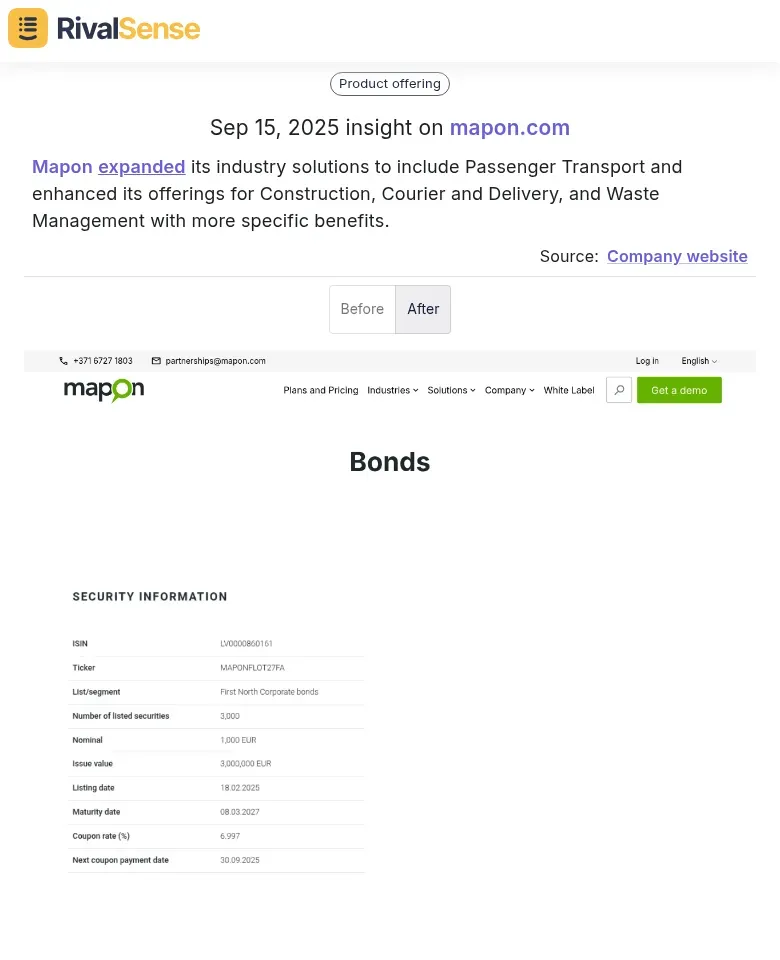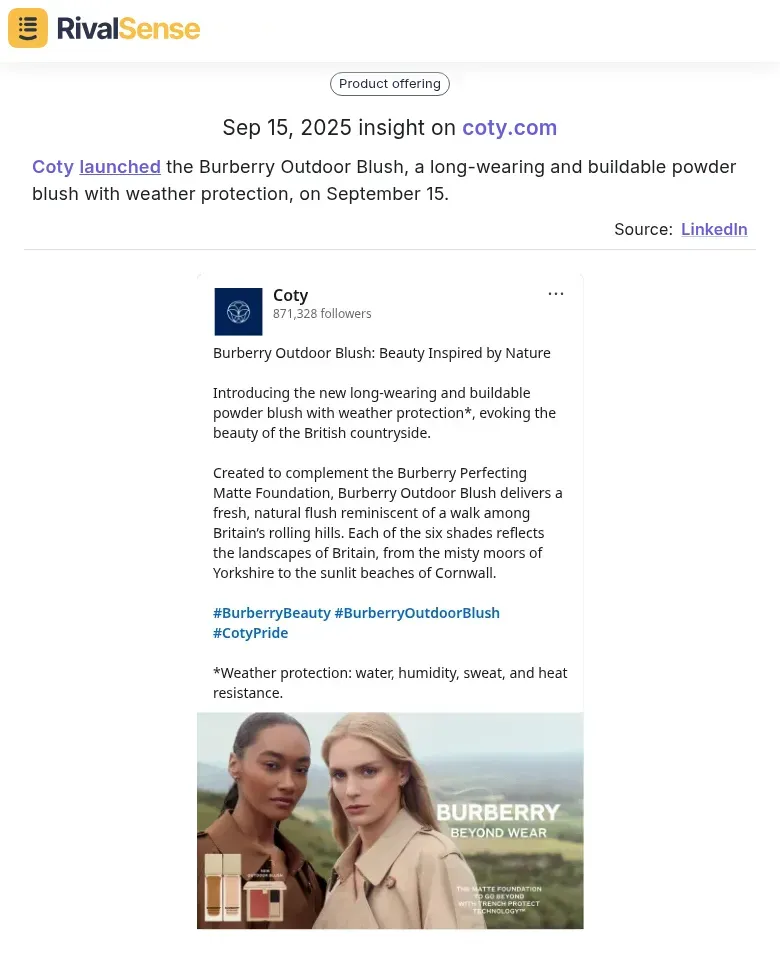Unlocking Competitor Social Media Advantages: A Strategic Guide for Business Leaders
In today's hyper-competitive digital landscape, social media isn't just about brand building—it's a goldmine of competitive intelligence. While most businesses focus on their own social media presence, the real strategic advantage lies in understanding and leveraging your competitors' social media activities.
Why Competitor Social Media Intelligence Matters
Social media platforms have become the modern-day Roman forum—a place where customers share unfiltered opinions, competitors reveal their strategies, and industry trends emerge in real-time. According to recent data, over 70% of consumers follow brands on social media to stay informed about new products and services. This makes social media the perfect environment for gathering actionable competitive intelligence.
5 Key Advantages of Tracking Competitor Social Media
1. Identify Market Gaps and Opportunities
By analyzing what your competitors are (and aren't) doing on social media, you can spot underserved customer needs and market opportunities. For example, if all your competitors focus on product features but ignore customer education, you can position yourself as the industry expert through educational content.
Practical Tip: Create a spreadsheet tracking competitors' content types, posting frequency, and engagement rates. Look for patterns where engagement is high but content is scarce—these represent potential opportunities.
2. Benchmark Your Performance
Understanding where you stand relative to competitors helps set realistic goals and measure progress. Key metrics to track include:
- Follower growth rates
- Engagement rates (likes, comments, shares)
- Content performance by type
- Response times to customer inquiries
Checklist:
- [ ] Track 3-5 main competitors
- [ ] Monitor weekly engagement metrics
- [ ] Compare posting frequency
- [ ] Analyze content mix (video, images, text)
3. Discover Emerging Trends
Competitors often test new strategies and content formats before they become mainstream. By monitoring their social media, you can:
- Identify successful new content formats
- Spot emerging platform features they're leveraging
- Discover partnership and influencer collaborations
Real Example: When Mapon expanded its industry solutions to include Passenger Transport and enhanced offerings for Construction, Courier and Delivery, and Waste Management, this signaled emerging B2B trends in specialized industry solutions. Tracking such expansions helps you anticipate market shifts and adapt your strategy accordingly.

4. Understand Customer Sentiment
Social media provides unfiltered access to how customers feel about your competitors. Monitoring their comment sections and mentions reveals:
- Common customer complaints
- Feature requests
- Service issues
- Brand perception
Actionable Insight: Use this intelligence to address pain points your competitors are ignoring, positioning your solution as the better alternative.
5. Inform Product and Content Strategy
Competitor social media activity often reveals their strategic direction. Product launch announcements, like Geotab's AI-enabled GO Focus Plus dash cam, provide invaluable intelligence about where competitors are investing and what new capabilities they're bringing to market. This type of insight helps you anticipate competitive moves and adjust your product roadmap.

Step-by-Step Guide to Competitor Social Media Analysis
Step 1: Identify Your Key Competitors
Start with 3-5 main competitors who target similar audiences. Include both direct competitors and aspirational brands you admire.
Step 2: Choose Monitoring Platforms
Focus on platforms where your target audience is most active. For B2B, this typically means LinkedIn, Twitter, and increasingly, Instagram.
Step 3: Track Key Metrics
Create a dashboard tracking:
- Follower growth over time
- Engagement rates by content type
- Posting frequency and timing
- Hashtag performance
- Influencer collaborations
Step 4: Analyze Content Strategy
Examine:
- Content mix (educational, promotional, entertaining)
- Tone and voice
- Visual style
- Call-to-action strategies
Step 5: Monitor Customer Interactions
Pay attention to:
- Response times to comments and questions
- Handling of negative feedback
- Community building efforts
Step 6: Implement Regular Reporting
Set up weekly or monthly reports to track changes and trends over time.
Advanced Techniques for Maximum Advantage
Social Listening for Strategic Insights
Go beyond basic monitoring by setting up alerts for:
- Competitor mentions and hashtags
- Industry keywords and trends
- Customer pain points and complaints
Competitive Advertising Intelligence
Use tools like Facebook Ad Library to analyze competitors' paid social strategies, including:
- Ad creative and messaging
- Targeting parameters
- Campaign duration and frequency
Influencer Partnership Tracking
Monitor which influencers and thought leaders your competitors collaborate with, as these partnerships often reveal target audience expansion strategies.
Real-World Competitive Intelligence Examples
Product Launch Intelligence
When Coty launched the Burberry Outdoor Blush with weather protection features, this type of product intelligence helps beauty industry competitors understand innovation trends and customer preferences. Tracking such launches across social media provides early warning of market shifts and new competitive offerings.

Overcoming Common Challenges
Information Overload
With multiple competitors across various platforms, tracking everything manually becomes overwhelming. Solution: Use automated monitoring tools that consolidate data into actionable insights.
Data Interpretation
Raw data alone isn't valuable—the insight comes from analysis. Solution: Focus on trends and patterns rather than individual data points.
Timeliness
Social media moves quickly, and outdated intelligence has limited value. Solution: Implement real-time monitoring and weekly reporting.
How RivalSense Enhances Competitor Social Media Intelligence
While manual monitoring provides some insights, comprehensive competitor tracking requires specialized tools. RivalSense offers automated monitoring across 80+ sources, including:
- Social Media Platforms: Track competitors' posts, engagement, and follower growth across all major networks
- Product Launches: Get alerted to new features and offerings before they're widely promoted
- Pricing Changes: Monitor competitor pricing strategies and promotional offers
- Media Mentions: Track coverage in industry publications and blogs
- Management Changes: Stay informed about organizational shifts that might indicate strategic changes
Key Benefit: Instead of spending hours manually checking competitors' social media, RivalSense delivers consolidated weekly reports with actionable insights, saving time while providing comprehensive competitive intelligence.
Implementation Checklist
- [ ] Identify 3-5 key competitors to monitor
- [ ] Set up social media monitoring for each competitor
- [ ] Create tracking spreadsheet for key metrics
- [ ] Schedule weekly review sessions
- [ ] Implement automated monitoring tools
- [ ] Establish reporting framework
- [ ] Train team on interpreting social media intelligence
- [ ] Integrate insights into strategic planning
Measuring ROI of Competitor Social Media Intelligence
Track the impact of your competitor monitoring efforts by measuring:
- Time Saved: Hours reduced on manual monitoring
- Opportunities Identified: Number of strategic insights gained
- Campaign Performance: Improvement in engagement and conversion rates
- Market Positioning: Enhanced competitive positioning based on intelligence
Conclusion: Turning Intelligence into Advantage
Competitor social media monitoring isn't about copying what others are doing—it's about understanding the competitive landscape so you can make smarter strategic decisions. The companies that consistently outperform their competitors are those that turn social media intelligence into actionable insights.
By systematically tracking competitor social media activities, you can:
- Anticipate market shifts before they happen
- Identify unmet customer needs
- Optimize your own social media strategy
- Make data-driven decisions about product development and positioning
Remember: The goal isn't to become your competitors—it's to understand them well enough to outperform them. In today's fast-paced digital environment, that understanding might be your most significant competitive advantage.
Ready to transform your competitive intelligence? Try RivalSense for free and get your first competitor report today. Our automated tracking across social media and 80+ other sources delivers the insights you need to stay ahead—without the manual work.
Get Started with RivalSense Free
📚 Read more
👉 How Early Detection of Mapon's Route Planning Expansion Saved 15% Market Share
👉 Data-Driven Website Insights: Track Competitors to Secure Key Account Renewals
👉 7 SaaS Key Account Assessment Mistakes to Avoid (And How Competitive Intelligence Can Help)
👉 Competitor Product Insights: A Key Account Growth Blueprint
